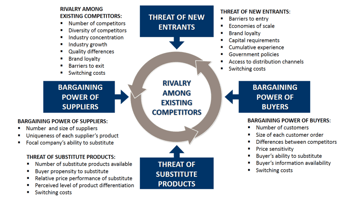When faced with the task of evaluating a new opportunity, especially in an unfamiliar industry, it...
Business Models Centered on Sustainability, Circularity, and Inclusivity: Creating Hybrid Forms of Collective Value
Theoretical Foundations of Business Models Focused on Sustainability, Circularity, and Inclusivity
In the evolving landscape of business theory, sustainability, circularity, and inclusivity are emerging as transformative principles. These interconnected concepts redefine traditional value creation, fostering hybrid forms of collective value through collaborative and resource-efficient practices. This theoretical exploration draws on insights from the research report Urban Business Models - Exploring Business Models in the Urban Environment by Jonker, Montenegro Navarro, and Brennan, 2018.
Theoretical Pillars of Sustainability, Circularity, and Inclusivity
1. Sustainability: A Systems Perspective
Sustainability emphasizes the responsible use of resources to meet present needs without compromising future generations. The concept has expanded beyond environmental considerations to encompass social, economic, and institutional dimensions.
- Theoretical Insights: Sustainability theory challenges linear consumption models, advocating for the optimization of resource use, energy efficiency, and resilience within systems.
- Practical Application: Businesses integrate sustainability by adopting renewable resources, minimizing emissions, and prioritizing long-term viability.
2. Circularity: Extending Resource Value
Circularity revolves around retaining the value of materials and resources through prolonged cycles of use. As a theoretical construct, it focuses on redesigning processes to minimize waste and enable closed-loop systems.
- Theoretical Insights: Circular economy (CE) models redefine value creation by prioritizing reuse, repair, and recycling. This contrasts with traditional, extractive business practices.
- Key Idea: Circularity integrates well with systems theory, recognizing interdependencies and feedback loops within value networks.
3. Inclusivity: Addressing Human and Social Dimensions
Inclusivity theory seeks to broaden participation and equity in economic and social systems. It involves incorporating diverse stakeholders and addressing the unique needs of marginalized or underrepresented groups.
- Theoretical Insights: Inclusivity moves beyond accessibility, embedding fairness and representation into decision-making and value distribution processes.
- Key Connection: It overlaps with social capital theories, which emphasize trust, collaboration, and shared values.
Hybrid Models of Collective Value Creation
The Concept of Collective Value
Collective value refers to the co-creation of outcomes that benefit multiple stakeholders. This approach shifts the focus from individual gains to shared benefits, aligning business strategies with societal goals.
- Theoretical Basis: Grounded in collaborative innovation theories, collective value creation emphasizes partnerships across sectors, leveraging diverse capabilities and resources.
- Key Dimensions:
- Material: Utilizing physical resources sustainably.
- Social: Building relationships and trust.
- Institutional: Structuring governance for collaborative outcomes.
Idle Capacity and Resource Utilization
One significant premise of hybrid business models is the activation of idle capacities—underutilized resources such as knowledge, infrastructure, or skills. By organizing these resources effectively, businesses can unlock new value.
- Theoretical Link: Resource-based theory underpins this approach, emphasizing the strategic use of internal and external assets to achieve competitive advantage.
Building Blocks of Sustainability-Focused Business Models
-
Stakeholder Integration:
- Theory: Stakeholder theory advocates for aligning business objectives with the interests of all involved parties, from employees to communities.
- Application: Businesses create platforms for collaboration, enabling co-designed solutions.
-
Value Retention Mechanisms:
- Theory: Systems dynamics highlight the need for adaptive processes that maintain equilibrium in resource flows.
- Example: Designing products for longevity and modularity, facilitating repair and upgrades.
-
Participatory Governance:
- Theory: Participatory theories emphasize inclusive decision-making, where stakeholders contribute to shaping outcomes.
- Example: Co-creating policies with local communities or interest groups.
Integrating Sustainability, Circularity, and Inclusivity
A Holistic Approach
Integrating these principles requires businesses to move beyond isolated efforts toward a holistic perspective:
- Sustainability ensures that resource use aligns with ecological thresholds.
- Circularity maintains resource value over time, minimizing extraction and waste.
- Inclusivity ensures that the benefits of these practices are equitably distributed.
Key Theoretical Intersections
- Sustainability and Circularity: Together, these address the need for systemic resource efficiency.
- Circularity and Inclusivity: Shared economic models, such as cooperatives, exemplify the overlap between these principles.
- Sustainability and Inclusivity: Highlighting human welfare as integral to ecological health.
Collective Value Creation: The Role of Hybrid Business Models
Hybrid business models emerge as practical frameworks for implementing these theories. They blend profit-oriented goals with societal and environmental responsibilities, fostering collaboration among diverse stakeholders.
Key Features of Hybrid Models
- Collaborative Governance: Involving public, private, and community actors in shared decision-making.
- Resource Sharing: Optimizing the use of physical and human resources across networks.
- Technology Integration: Leveraging IoT and digital tools for transparency and efficiency.
Theoretical Implications
Hybrid models challenge traditional paradigms of competition and individualism. They align with shared value theories, which posit that businesses can achieve economic success by addressing societal challenges.
Challenges and Future Directions
- Overcoming Silos: Integrating sustainability, circularity, and inclusivity requires breaking down operational silos and fostering interdisciplinary approaches.
- Measuring Collective Value: Traditional metrics often fail to capture social and environmental outcomes, necessitating new valuation frameworks.
- Scaling Impact: Hybrid models must balance local customization with global scalability.
Conclusion: Toward a Unified Theory of Collective Value Creation
The integration of sustainability, circularity, and inclusivity represents a paradigm shift in business theory. By focusing on hybrid business models, organizations can transition from isolated value creation to collaborative ecosystems that benefit society and the environment. This approach not only addresses complex challenges but also unlocks new opportunities for innovation and resilience in a rapidly changing world.
This theoretical foundation offers a roadmap for businesses and researchers aiming to create a sustainable, equitable, and circular future.
References:
.png?width=130&height=130&name=Modern%20Computer%20Software%20Guide%20E%20Book%20Cover%20(Logo).png)


